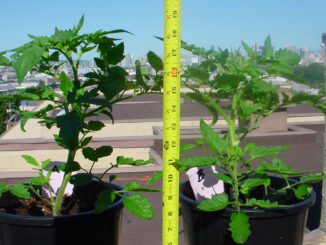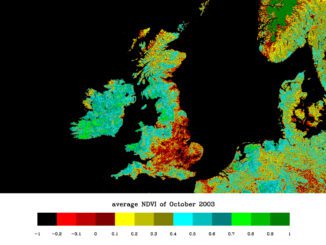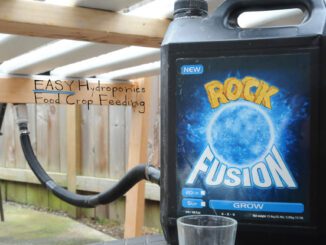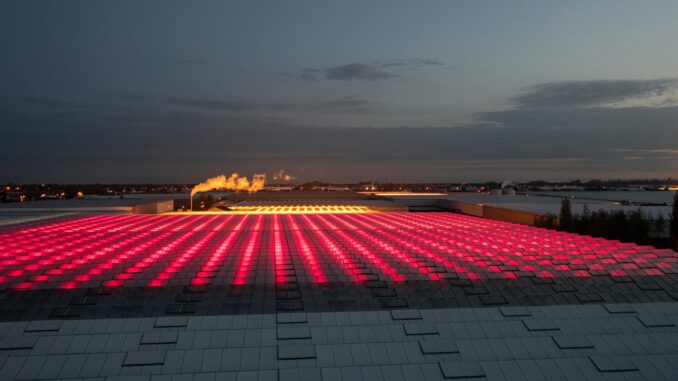
Dutch Vertical Farming | Laura Reiley |
The rallying cry in the Netherlands started two decades ago, as concern mounted about its ability to feed its 17 million people: Produce twice as much food using half as many resources.
The country, which is a bit bigger than Maryland, not only accomplished this feat but also has become the world’s second largest exporter of agricultural products by value behind the United States. Perhaps even more significant in the face of a warming planet: It is among the largest exporters of agricultural and food technology. The Dutch have pioneered cell-cultured meat, vertical farming, seed technology and robotics in milking and harvesting — spearheading innovations that focus on decreased water usage as well as reduced carbon and methane emissions.

Netherlands (to scale) United States
The Netherlands produces 4 million cows, 13 million pigs and 104 million chickens annually and is Europe’s biggest meat exporter. But it also provides vegetables to much of Western Europe. The country has nearly 24,000 acres — almost twice the size of Manhattan — of crops growing in greenhouses. These greenhouses, with less fertilizer and water, can grow in a single acre what would take 10 acres of traditional dirt farming to achieve. Dutch farms use only a half-gallon of water to grow about a pound of tomatoes, while the global average is more than 28 gallons.
Nothing is hand-harvested, nothing is touched by human hands. The water is recirculated, meaning no water is lost in the growing process.
Ockers
More than half of the land in the Netherlands is used for agriculture. The Dutch often say their singular focus on food production is born of the harrowing famine the country experienced during World War II. But it could be argued that the preoccupation with food began in the 17th century, when the Dutch were at the center of the global spice trade.
Their centrality in global food exploration is indisputable: Fifteen out of the top 20 largest agrifood businesses — Nestlé, Coca-Cola, Unilever, Cargill and Kraft Heinz — have major research and development centers in the Netherlands.
With their limited land and a rainy climate, the Dutch have become masters of efficiency. But there are challenges: The greenhouse industry has flourished in part because of cheap energy, but Western Europe is facing soaring gas prices. And the country’s intensive animal agricultural practices are also at risk. This summer, a conservative government coalition pledged to halve nitrogen emissions by 2030, which would necessitate a dramatic reduction in the number of animals raised in the country. Farmers and ranchers have protested, and it remains to be seen how this standoff will be resolved.
Seeds
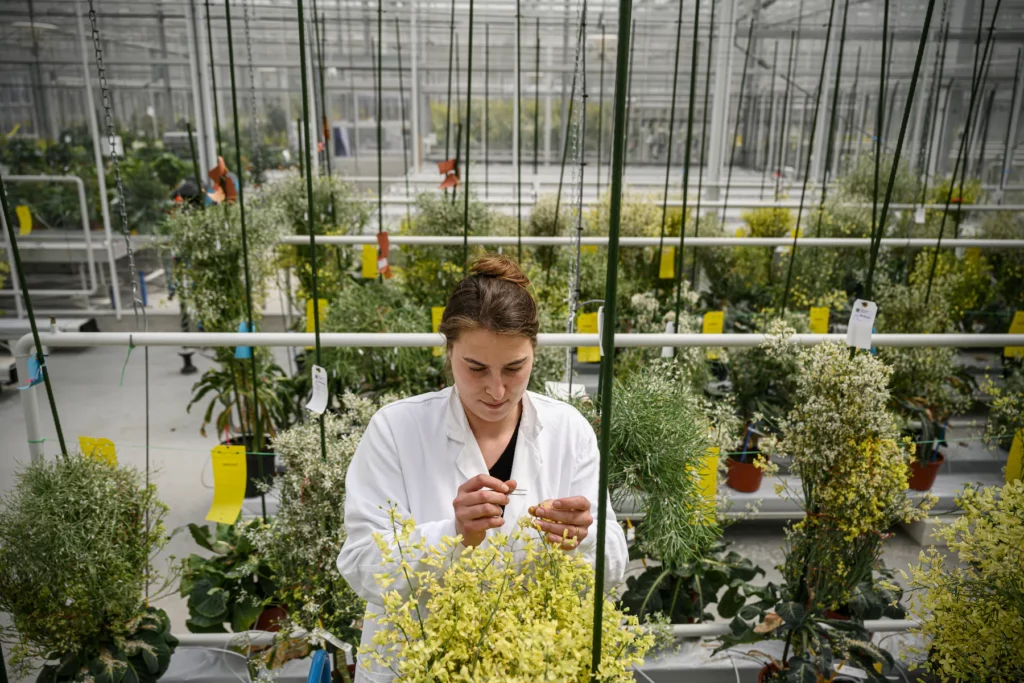
Dutch companies are the world’s top suppliers of seeds for ornamental plants and vegetables. There is an area in the northwest called Seed Valley, where new varieties of vegetables and flowers are in constant development. Enza Zaden is headquartered here, just north of Amsterdam.
In three generations, Enza Zaden has evolved from a family-owned seed shop into a global market leader in vegetable breeding, with more than 2,500 employees and 45 subsidiaries in 25 countries.
Jaap Mazereeuw, Enza Zaden’s managing director, said the company spends $100 million annually on research, introducing about 150 new vegetable varieties each year.
“We are very much a research company,” he said. “With climate change, we are seeing the weather becoming more extreme. We’re looking at resilient varieties, seeds for organic farms as well as varieties that are more salt tolerant for places where water quality is not good. We need to find solutions for subsistence farmers all the way up to large-scale farmers.”

“We have our own indoor farm here where we develop the varieties of the future, crops that can grow quickly and be harvested quickly: lettuce, herbs, leafy crops. The genetics can be improved, as well as the whole technology — indoor farming will only become cheaper. It’s still early days for the industry,” Mazereeuw said.

More than 12 billion heads of lettuce are grown each year from Enza Zaden’s seeds, but it was a tomato in the early 1960s that really put the company on the map — and perhaps what, in turn, put the Netherlands on the map for tomatoes. The country’s greenhouses produce nearly a million tons of tomatoes a year, with exports totaling around $2 billion annually.
“There’s a new tomato virus and we recently found the resistance to that virus in our seed bank,” Mazereeuw said. The company stores its seeds in a temperature-controlled vault — called a seed bank — to preserve genetic diversity, but because seeds don’t stay viable forever, each stored variety must be grown out and those seeds, in turn, saved. It is all of vital importance, Mazereeuw said: “If we talk about food or clothes or energy or animal husbandry — everything starts with plants.”
Produce
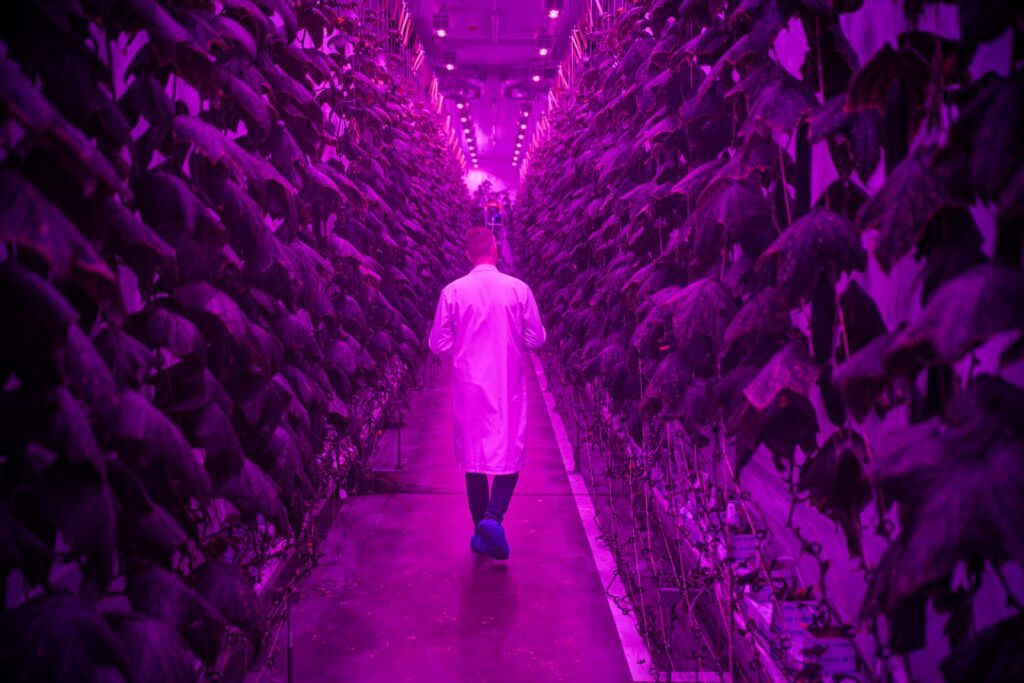
A technician walks between walls growing cucumbers at PlantLab in Amsterdam. PlantLab specializes in technology for urban farming and has the biggest indoor farm in Europe, located in the heart of Amsterdam in the former IBM typewriter factory.
Nature is brutal. There can be too much sun. Or not enough. Bugs maraud. Rain washes seeds away.
“We believe we can do much better than nature,” said Eelco Ockers, chief executive of PlantLab, which develops and operates custom-built indoor farms worldwide — systems they call “plant production units.” Indoor vertical farmers trade in the free power of the sun for much more expensive electric light, but the benefit is they can much more easily control every variable to get consistent and reliable yield, Ockers said.

The three founders put together their first prototype in 2008 and launched the company in 2010, helping Dutch greenhouse and indoor farmers increase yields with LED lights even when the technology was in its infancy. They have a system whereby enough crops to supply 100,000 residents daily with nearly half a pound of fresh vegetables each can be grown in an area no larger than two football fields.
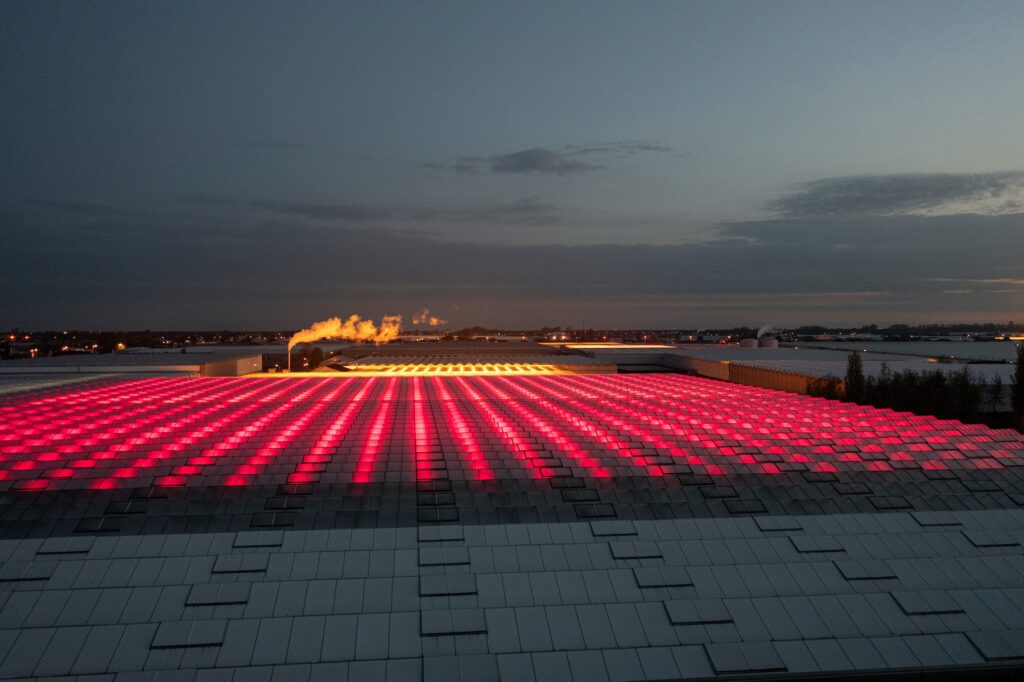
Earlier this year PlantLab received 50 million euros (about $51.6 million) in investment capital to open more production sites outside the Netherlands to grow vegetables without pesticides or herbicides on a large scale very close to its consumers. The company’s goal is to expand more broadly in the United States, Asia and Latin America in the next five years, with the aim of having 250 acres of its vertical farms worldwide in the next 10 years.
PlantLab’s research and development center in Den Bosch is the largest such center for vertical farming in the world, and it uses limited light spectrum LEDs and plastic stacked production trays, and the plants grow in vermiculite with their roots in water. “Nothing is hand-harvested, nothing is touched by human hands,” Ockers said. The water is recirculated, meaning no water is lost in the growing process. For now, the system is most effective for growing leafy greens, herbs and tomatoes, but he said cucumbers, zucchinis and all types of berries are suited to this growing system. And by limiting the time between harvest and consumption, he said, food waste is minimized and nutrient density is much higher than traditionally grown crops.Lettuces grown on water in a Siberia Greenhouse system in Maasbree.
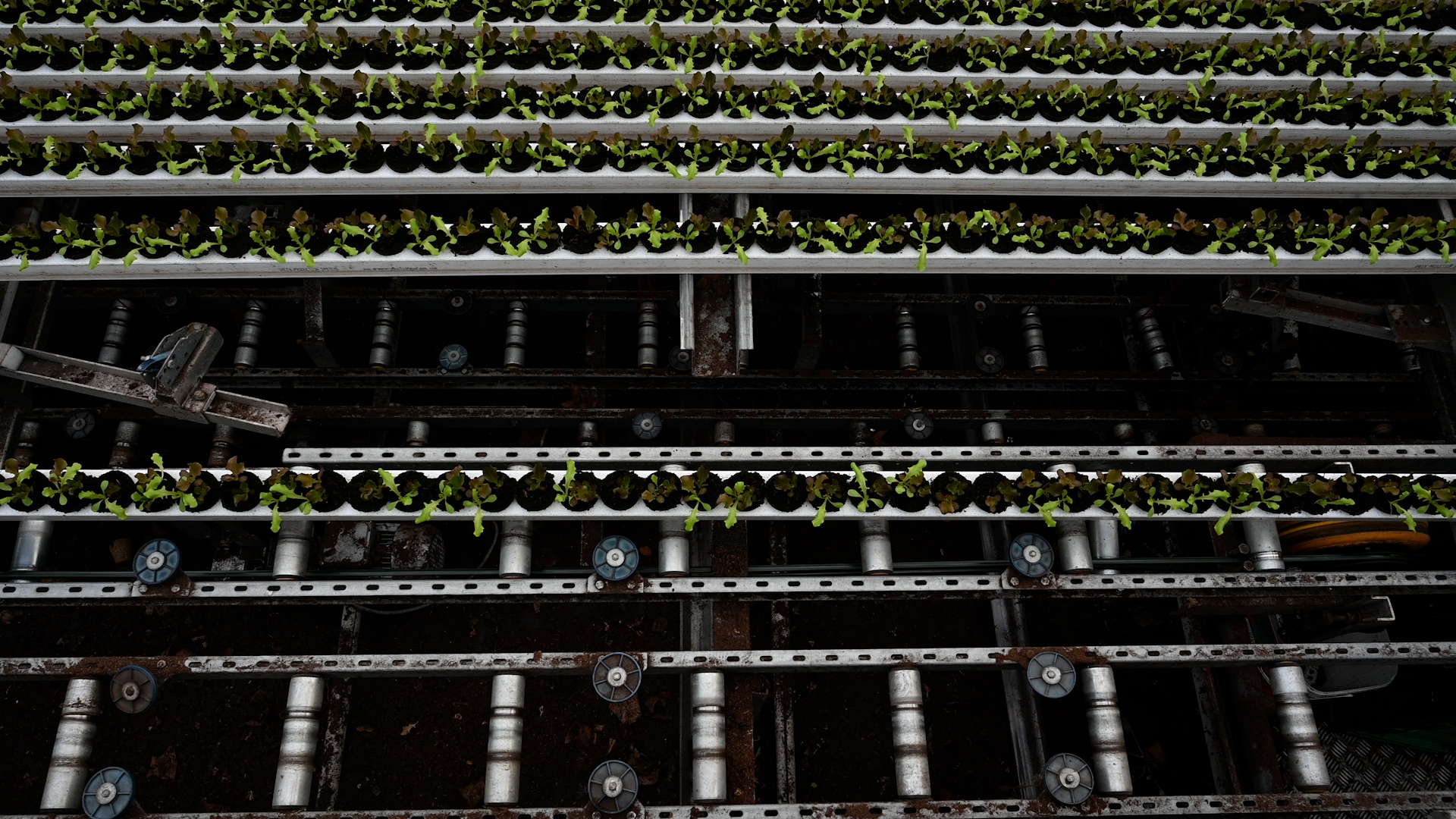
Read the Entire Original Article Here: https://www.washingtonpost.com/business/interactive/2022/netherlands-agriculture-technology/

